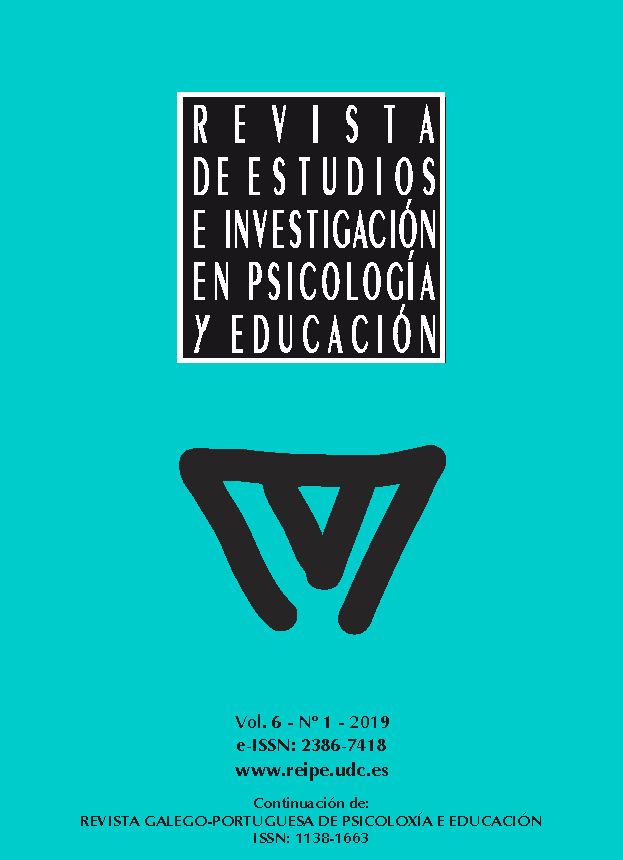Differences in mental imagery between Spanish and Italian populations
Main Article Content
Abstract
Studies measuring imagery vividness in different populations from different countries are scarce. Thus, the aim of this study was to ascertain if there were significant differences between Spanish and Italian populations and between women and men in three types of mental imagery: image vividness, image control, and spatial imagery ability. A total of 103 Italian second-year undergraduates, and 110 Spanish second-year undergraduates were administered three types of test: a test measuring image vividness, another image control, and a third test measuring spatial imagery ability. Though gender was not found to influence any of the measurements of imagery analysed, the country of origin was found to influence image control. Spanish participants obtained significantly higher image control scores than Italian participants. Further studies are required to measure these and other types of imagery, in these and other countries in order to broaden our understanding of the distribution of imagery ability worldwide.
Keywords:
Downloads
Article Details
References
Ashton, R., & White, K. D. (1980). Sex differences in imagery vividness: An artifact of the test. British Journal of Psychology, 71, 35–38. https://doi.org/10.1111/j.2044-8295.1980.tb02726.x
Baranchok, J. S. (1995). The linguistic and statistical equivalence of Spanish and English versions of Betts Questionnaire Upon Mental Imagery. Tesis Doctoral no publicada. Recuperada de https://ttu-ir.tdl.org/handle/2346/61170
Campos, A. (Ed.) (1998a). Imágenes mentales. Santiago de Compostela: Servicio de Publicaciones de la Universidad de Santiago de Compostela.
Campos, A. (1998b). A measure of visual imaging capacity: A preliminary study. Perceptual and Motor Skills, 87, 1012-1014. https://doi.org/10.2466/pms.1998.87.3.1012
Campos, A. (2009). Spatial imagery: A new measure of the visualization factor. Imagination, Cognition and Personality, 29, 31-39. https://doi.org/10.2190/IC.29.1.c
Campos, A. (2012). Measure of the ability to rotate mental images. Psicothema, 24, 431-434. https://doi.org/10.1037/t14408-000
Campos, A. (2013). Reliability and percentiles of a measure of spatial imagery. Imagination, Cognition and Personality, 32, 427-431. https://doi.org/10.2190/IC.32.e.f
Campos, A. (2014). Gender differences in imagery. Personality and Individual Differences, 59, 107-111. https://doi.org/10.1016/j.paid.2013.12.010
Campos, A., & Astorga, V. M. (1986a). Spanish, North American, and Canadian ratings of imagery values of words. Perceptual and Motor Skills, 63, 889-890. https://doi.org/10.2466/pms.1986.63.2.889
Campos, A., & Astorga, V. M. (1986b). Evocación de imaxes en suxeitos españois e canadienses: Unha análise comparativa. En M. Pérez (Ed.). Eidos de intervención en psicoloxía (pp. 243-246). Santiago de Compostela: Colexio Oficial de Psicólogos.
Campos, A., & Astorga, V. M. (1986c). Evocación de imaxes en suxeitos españois e nordeamericanos: Unha análise comparativa. En M. Pérez (Ed.). Eidos de intervención en psicoloxía (pp. 251-258). Santiago de Compostela: Colexio Oficial de Psicólogos.
Campos, A., González, M. A., & Amor, A. (2002). The Spanish version of the Vividness of Visual Imagery Questionnaire: Factor structure and internal consistency reliability. Psychological Reports, 90, 503-506. http://doi.org/10.2466/PR0.90.2.503-506
Campos, A., & Pérez, M. J. (1988a). Vividness of Movement Imagery Questionnaire: Relations with other measures of mental imagery. Perceptual and Motor Skills, 67, 607–610. https://doi.org/10.2466/pms.1988.67.2.607
Campos, A., & Pérez, M. J. (1988b). Visual Elaboration Scale as measure of imagery. Perceptual and Motor Skills, 66, 411–414. https://doi.org/10.2466/pms.1988.66.2.411
Campos, A., Pérez-Fabello, M.J., & Gómez-Juncal, R. (2004). Gender and age differences in measured and self-perceived imaging capacity. Personality and Individual Differences, 37, 1383-1389. http://dx.doi.org/10.1016/j.paid.2004.01.008
Campos, A., & Sueiro, E. (1993). Sex and age differences in visual imagery vividness. Journal of Mental Imagery, 17(3–4), 91–94.
George, D., & Mallery, P. (2003). SPSS for windows step by step: A simple guide and reference. 11.0 update. Boston: Allyn & Bacon.
Horowitz, M. J. (1983). Image formation and psychoterapy. New York: Jason Aronson.
Linn, M. C., & Peterson, A. C. (1985). Emergence and characterization of sex differences in spatial ability: A meta-analysis. Child Development, 56, 1479-1498. https://doi.org/10.2307/1130467
Marks, D. F. (1973). Visual imagery differences in the recall of pictures. British Journal of Psychology, 64, 17-24. http://dx.doi.org/10.1111/j.2044-8295.1973.tb01322.x
Marks, D. F. (1995). New directions for mental imagery research. Journal of Mental Imagery, 19, 135-149.
Marsella, A. J., & Quijano, W. Y. (1974). A comparison of vividness of mental imagery across different sensory modalities in Filipinos and Caucasian-Americans. Journal of Cross-Cultural Psychology, 5, 451-464. https://doi.org/10.1177/002202217400500406
McConkey, K. M., & Nogrady, H. (1986). Visual Elaboration Scale: Analysis of individual and group version. Journal of Mental Imagery, 10, 37–46.
McKelvie, S. J. (1986). Effects of format of the vividness of visual imagery questionnaire on content validity, split-half reliability, and the role of memory in test-retest reliability. British Journal of Psychology, 77, 229–236. https://doi.org/10.1111/j.2044-8295.1986.tb01997.x
Paivio, A., Yuille, J. C., & Madigan, S. (1968). Concreteness, imagery, and meaningfulness values for 925 nouns. Journal of Experimental Psychology Monograph Supplement, 76, 1-25. http://dx.doi.org/10.1037/h0025327
Pérez-Fabello, M. J., & Campos, A. (2004). Factor structure and internal consistency of the Spanish version of the Gordon Test of Visual Imagery Control. Psychological Reports, 94, 761-766. https://doi.org/10.2466/PR0.94.3.761-766
Reilly, D., & Neumann, D. L. (2013). Gender-role differences in spatial ability: A metaanalytic review. Sex Roles, 68, 521–535. https://doi.org/10.1007/s11199-013-0269-0
Richardson, A. (1969). Mental imagery. New York: Springer.
Richardson, A. (1977). The meaning and measurement of memory imagery. British Journal of Psychology, 68, 29-43. https://doi.org/10.1111/j.2044-8295.1977.tb01556.x
Sheehan, P. W. (1967). A shortened form of Betts’ Questionnaire Upon Mental Imagery. Journal of Clinical Psychology, 23, 386-389. https://doi.org/10.1002/1097-4679(196707)23:3
Varela, R. (2018). Las imágenes de la invención. Manuscrito no publicado. Consejo Superior de Investigaciones Científicas. Santiago de Compostela.
Voyer, D., Voyer, S., & Bryden, M. P. (1995). Magnitude of sex differences in spatial abilities: A meta-analysis and consideration of critical variables. Psychological Bulletin, 117, 250-270. https://doi.org/10.1037/0033-2909.117.2.250
Walker, H. J. (1970). Imagery ratings for 338 nouns. Behavior Research Methods & Instrumentation, 2, 165-167. http://doi.org/10.3758/BF03209293
White, K. D., Asthon, R., & Brown, M. D. (1977). The measurement of imagery vividness: Normative data and their relationship to sex, age, and modality differences. British Journal of Psychology, 68, 203–211. https://doi.org/10.1111/j.2044-8295.1977.tb01576.x



